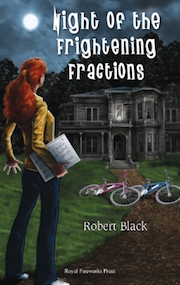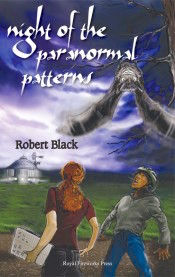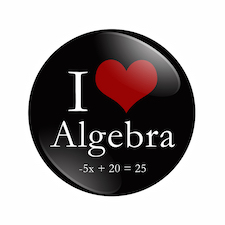Mathematical Fiction: A Novel Look at Numbers
In our relentless pursuit of intriguing articles on math topics, we came across Robert Black’s interesting idea: mathematical fiction. Here he not only highlights his own work in this young field but shares tips for educators who think they might like to have their students (or themselves) write some mathical tales.

As the son of two math teachers and a mechanical engineering major in college, I took everyone by surprise in the mid-1980s when I turned to writing for children and earned a place on the staff of the Nickelodeon network series You Can’t Do That On Television.
I’ve lived a professional double life since then, but now I’m working on a way to bring those two sides together – one that draws on my teacher lineage as well.
These days, I’m writing books for middle schoolers that use storytelling to teach math concepts. It’s something I call “Mathematical Fiction.” Recently, I discovered that the Mathematical Sciences Research Institute and the Children’s Book Council have taken an interest in the same kind of stories, only they call them “Mathical Books.”
Mathematical Fiction – What it is, and what it isn’t
Before I began writing, I had to do some reading. Not the easiest assignment, because there’s very little out there in the way of fiction involving math. Some stories feature characters with good math skills, but they seldom show those characters using their skills.
Before long, I was branching out and reading mysteries and puzzle books to see if I could find anything useful there. Once some general ideas took shape, I began writing a few test stories to see what worked and what didn’t. Some good feedback came from a professor I know in the Charter College of Education at California State University Los Angeles, who shared my stories with her classes of prospective math teachers.

- The reader must have a chance to solve the math problems. Any math problem included in the story must be presented with enough information for the reader to put the book down and solve it before continuing on to the solution.
- The problems must make sense within the context of the story. The need for the characters to use math must arise naturally from the situations those characters get into. The problems shouldn’t appear randomly out of nowhere.
- The characters must go through the entire problem-solving experience. The answer to a math problem in the story isn’t found at the back, or in a sidebar where a narrator explains it. The characters must be shown going through all the steps of finding a solution, including instances where they make mistakes or try methods that don’t work. Sometimes adult characters are there to help out, but the kids must always be the ones who solve the problem.
- The story needs to be fun! That should be obvious, right? Kids won’t read a book they don’t enjoy. The story doesn’t have to be entirely comedic, but a little humor never hurts.
Unexpected challenges
After two books published and a third one currently going through revisions, I’ve made some interesting discoveries and had to overcome some surprising obstacles. Probably the one I least expected has been the difficulty of creating good math problems. It’s a lot harder than it looks!

Another challenge I’ve wrestled with from the very beginning has been deciding how advanced I wanted to make my problems. I’ve always written for middle school kids, but even in that relatively narrow age group, there’s a wide range of mathematical ability.
An answer to this question has come to me through the writing process. It turns out that the more elementary levels of math simply don’t make an interesting story. If the basic functions – addition, subtraction, fractions, and so on – are all the story is trying to teach, it takes quite a few problems in combination to create a worthwhile narrative. More advanced subjects provide more room for exploration and discovery, and there are plenty of good stories to be told about exploration and discovery.
Capturing the mathematical experience
The conclusion I’ve reached for my own books is that it’s not as important for me to teach any particular techniques or areas of study as it is for me to communicate the overall experience of doing mathematics. My goal is to place the reader in the midst of people working on math problems, and give them as much of a sense as I can that they’re “in the story,” solving the problems along with the characters.
Kids and their teachers can choose from plenty of good books written by plenty of smart people to learn math techniques. What I want to do is demonstrate the kind of thinking that grows out of practicing those techniques. Mathematical thinking can help young people analyze situations, evaluate information and solve problems in a wide range of other areas.
What’s in my own books

After that, I have several other ideas in mind, most likely beginning with either a story that explores probability or a historical story about the dawn of the computer age. But there are plenty of other possibilities. (One way I knew I was on to something when I started working on Mathematical Fiction was that the good book ideas just kept coming!)
With the idea of blending math and fiction gaining wider attention, the chances are good that other authors will give the genre a try. I may have started my journey on my own, but I won’t mind having some company on the road ahead.
If you would like to know more, here are some links to explore:
Tips for writing your own Math Fiction!

► Setting up the math problem. You can use an existing one or make up one of your own. I’ve done both.
- Choose the mathematical subject you want as the focus of the problem.
- Work out the problem algebraically. I usually derive equations I can write into a spreadsheet, because it makes the next step easier.
- Find a set of values for your variables that will give your readers a simple solution.
► Setting up the story. Many times, I find myself setting up the math problem and the story simultaneously, but setting them up separately works, too. If you’re having a class or book group write stories, it might be interesting to give them all the same problem and see how many different stories they can tell with it.
Choose your characters. How many are there? Who are they? Boys? Girls? Kids? Adults?
- Stories are driven by the needs of their characters. In a “mathical” story, the characters must have a need to solve the problem. What is it?
- How will you hide the unknown? It shouldn’t be immediately obvious.
- Remember, a good “mathical” story is about the process of doing math, not just the act of computing an answer.
► Writing the story. Easy, right? Not necessarily…
- Establish the setting. Where are your characters? What are they doing?
- Present the problem. The story will work best if the problem arises naturally out of whatever is going on.
- Present the solution. You can write an objective presentation of the answer, like in the Minute Mysteries or Encyclopedia Brown stories, or you can show your characters figuring it out. I prefer the latter, but the former will do if you’re short on time.
Robert Black grew up in Indianapolis where his parents were both high school math teachers. He graduated from Vanderbilt University in 1986 with a bachelor’s degree in Mechanical Engineering and Mathematics. He has been writing for children since the mid-1980s, when he worked on a Nickelodeon TV series, and is also the author of two YA historical novels. When he’s not working as quality systems manager for Raypak Inc. of Oxnard, CA, or writing, he enjoys singing in the church choir, hiking in the California foothills and taking pictures.






























Insightful. Thank you.